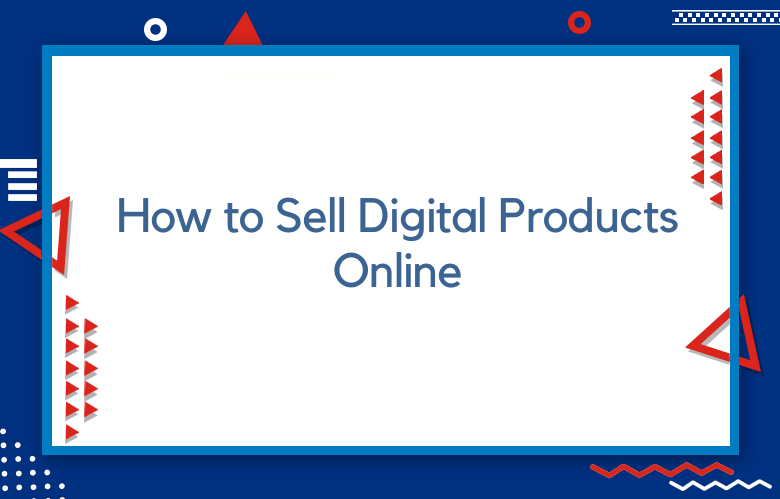How To Sell Digital Products Online In 2025 – Tips & Guide

Selling digital products online is becoming more and more popular each year. We will share tips on selling digital products in 2025.
If you want to sell digital products online in 2025, you’re in luck! We’ll give you tips and a guide on how to do just that. Keep reading for more information.
By 2025, online sales of digital products will reach $326 billion. If you want to be a part of this growing industry, now is the time to learn how to sell digital products online.
What are Digital Products?
Digital products such as courses, e-books, music, and videos can be paid online.
Digital products are a great way to make money online. Examples include books, live events, and online courses.
Digital Products are products that can be downloaded or purchased online. Digital products may include eBooks, videos, software, and membership sites.
Digital products are any products that exist in a digital form. You can’t touch them; you can only see or use them on your computer.
What is the best way to start selling digital products in 2025?
It will help if you start by becoming an affiliate for a digital product. This allows you to do marketing on your own time, at your own pace, and with little investment in products or services.
It would help if you started selling digital products in 2025. The best way to do it is by using Shopify because you don’t have to pay anything upfront, and there’s no risk of losing money.
I recommend starting a service-based business. For example, clients will be willing to pay for your services monthly if you’re an expert in programming or web design.
Tips for Selling Digital Products Online
- Find a product that you’re passionate about and knowledgeable about
- Create an attractive website with professional graphics
- Offer free samples or discounts to your customers
- Use social media to promote your products, but don’t spam people’s timelines!
- Find a product you are passionate about
- Create an attractive, informative website for your product
- Choose a suitable payment processor to accept payments from customers
- Use social media to promote your products and brand
- Offer a free trial of your product
- Provide an email address for customers to contact you with any questions
- Use customer testimonials and reviews on your site, and ask for feedback from them as well
- Make sure the products are easily found on search engines like Google
- Find a niche and create products related to it
- Create an email list and send out promotional material about your digital product.s
- Use social media, such as Facebook or Twitter, to promote your store
- Make sure you have a good theme for your site that is easy to navigate and has high-quality images
- Offer freebies as incentives for people to sign up on the mailing list or purchase from you
- Research your target market
- Decide on a competitive price point for the digital product you are selling.
- Choose the right product for you
- Create a website or blog to sell your products
- Use social media to promote your products
- Create an email list of customers and update them on new products, sales, and discounts.s
- Know your target audience and provide products they are interested in
- Find out what the competition is doing so you can differentiate yourself from them
- Create a website that’s easy for people to find their way around, with clear calls to action on each page
- Create a website or blog to sell your digital products
- Make sure the site is easy to navigate and contains explicit descriptions of each product
- Include social media buttons on your website so people can share them with their friends and followers
- Use search engine optimization (SEO) techniques like keywords, meta tags, and title tags to help people find you when they’re looking for something specific that you offer
- Create an email list to send out newsletters and updates
- Offer freebies in exchange for customer emails or social media follow-up. Ensure the products you’re selling are high-quality and have good descriptions.
The Future of Selling Digital Products Online – 2025 Predictions
All marketing will be demand generation. This will be a paradigm shift for many businesses. Digital products online will be “sold” as leads or prospects, not as immediate sales or purchases. Marketing organizations will see their roles and methods change from “marketing” products to “selling” leads.
Online stores will be powered by artificial intelligence technology and will recommend products to buyers based on previous purchases. Personalized recommendations based on the customer’s past actions increase purchase probability.
Selling digital goods such as books, music, software, and games will be done through traditional eCommerce transactions and revenue-sharing models between artists, content providers, and consumers. Consumers will be compensated for their time, their data, and what they can reveal about themselves and the groups they belong to.
Selling digital products online will be about selling highly personalized products and services. Data mining and machine learning technology will quickly and accurately diagnose customers’ needs or wants and provide them with them.
Consumers will not simply buy digital products; they will use them in new ways to generate essential revenue streams for companies. Media companies, like newspapers and music labels, will use these methods to charge consumers for using the media product at any time instead of only when they buy a specific product.
Selling products online will be a cheaper and faster experience where the customer buys products in a few minutes without filling out forms or even annoying registration screens. They will sample products, see whether or not they like them, and use the Web.
Transactions in the digital entertainment and information industries will become more standardized.
People will purchase digital products more than physical products from an online retail site because digital products are more accessible to ship and more convenient to obtain.
More and more products will become digital. Some of those digital products will be digital music, digital books, digital games, digital clothing and fashion, digital accessories, digital health and fitness devices, and digital toys.
Software sales will be made online rather than via phone order. The Web is critical to digital sales because of the ease of use it provides to the customer and the ability to target the market and tailor the product to the customer’s needs.
Digital products will be sold via lightweight, inexpensive devices such as cell phones, handheld game devices, and perhaps even appliances.
Youngsters will be able to design and sell their digital products online. This applies in the commercial sphere, education, and potentially the nonprofit realm.
Digital products will be acquired and shared in a variety of digital channels. These digital channels will offer an excellent selection of products and brands, enabling consumers to research, purchase, and conclude the shopping process in various ways.
Selling digital products will be as easy as selling products in a store. Consumers will want to purchase digital products from anywhere and from any device and wish to be notified when a digital product or package is available.
People will buy and sell “digital products” – purchased online and delivered digitally. Examples of products like this are digital music, photos, computer files, etc. The sale of such digital products is often referred to as e-commerce.
Conclusion
Keeping up with the new trends and technologies that drive sales in 202 may be challenging as the digital landscape changes. That’s where we come in! We can help you create a blueprint for success by providing expert consultation on everything from how-to videos to social media marketing campaigns. Contact us today if you want our team of experts at your service.
Call: +91 9848321284
Email: [email protected]



